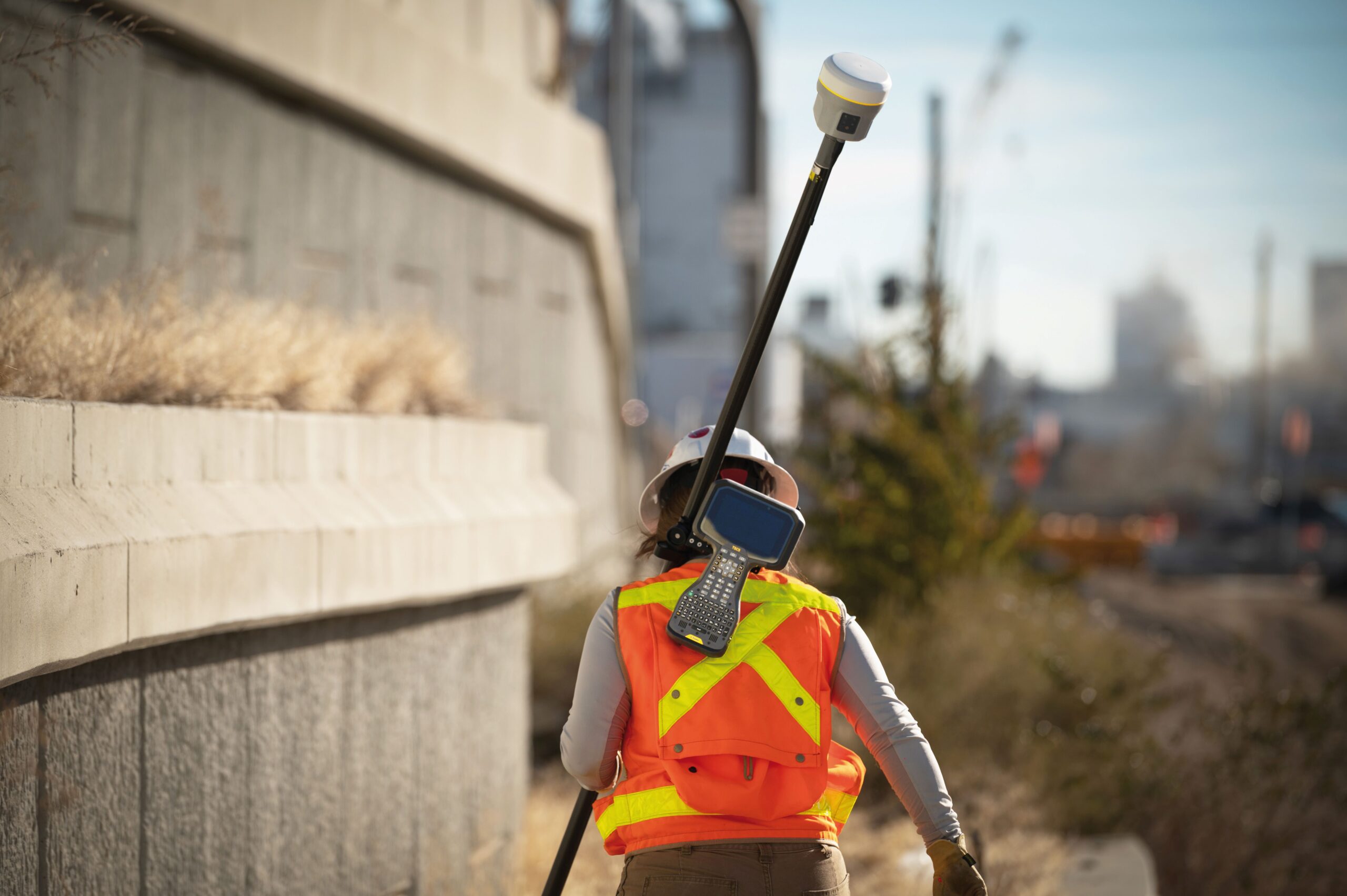Published: 16 Oct 2024
If you’re thinking about pursuing a career in surveying, then it’s worth knowing what you’re letting yourself in for! We’ve been focusing recently on training and skills. These are obviously vitally important but there’s really nothing like being out on site, using the equipment and meeting clients. The experience of interacting with other operatives on site too is invaluable, and can’t be easily replicated by study alone. But it’s not simply a case of showing up on site. A great deal of planning and prep goes into each working day and it’s worth discovering what to expect on your first day on the job.
Safety first
Wherever the location of the site, you’ll need to make sure that you’re equipped to carry out the work. This will depend on a number of obvious factors – waterproofs for wet weather, extra precautions in ice and snow etc – but also more general aspects. If the survey work is being carried out on a working construction site for instance, then you’ll need to adhere to the site’s safety codes. This will include wearing protective gear, such as a hardhat and steel toe-capped boots, and a fluorescent tabard, often referred to ‘hi vis’, so you can stand out on a busy site.
There are also common-sense elements to dressing for site too, with practical clothing such as trousers, chinos, jeans, shirts and jumpers favoured over loose-fitting styles. If you’re working outside, look at the weather forecast, so you have warmth or layers to discard if you need to. If the work is out in the open – an undeveloped greenfield site for instance – then you won’t need to wear all the safety gear, such as a hardhat. But there will be other hazards to be aware, like natural features, which will still require practical clothing. All these decisions are needed before you need to choose which pieces of equipment will be needed for the task that day.
Live and learn from your first day
One of the advantages of learning on the job is that you’ll be learning from experienced professionals who know the job well. Their explanations and instruction can be a much more direct way of absorbing information than learning theory and just being taught in in a lecture theatre. Of course, when you are a surveyor, some of your role will still be office-based. The data you collate will need to be analysed and used to create anything from digital plans and 3D models. For your first site visits, you’ll be accompanying an experienced surveyor. Later, you’ll be assigned your own projects which can often be carried out solo – unless it’s a task such as levelling, which requires someone else to hold the levelling staff and is always a two-person job.
There are obvious advantages to two surveyors working together, particularly from a health and safety point of view – one looks out for the other and two heads are often better than one for problem-solving. Working on site will always require a degree of alertness and awareness of your surroundings. If you are carrying out a road survey, for example, you may be working in proximity to the public or busy roads. If it is at all possible, it’s worth scheduling surveying tasks in busy areas at quieter times of day – outside rush hour, or school times, when both roads and pavements can become more congested than normal. In all situations, the safer you can make your working environment, the better.
If you think a career in land survey is appealing, then why not visit our website to see how you can start the journey.

